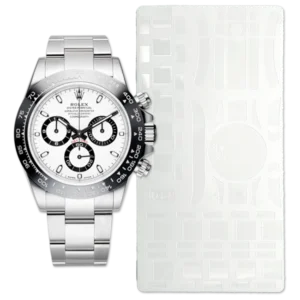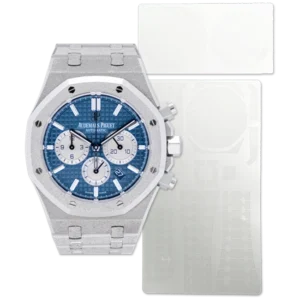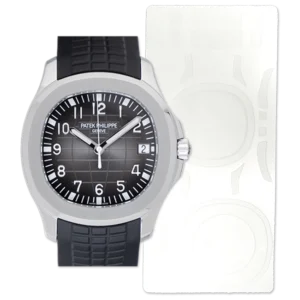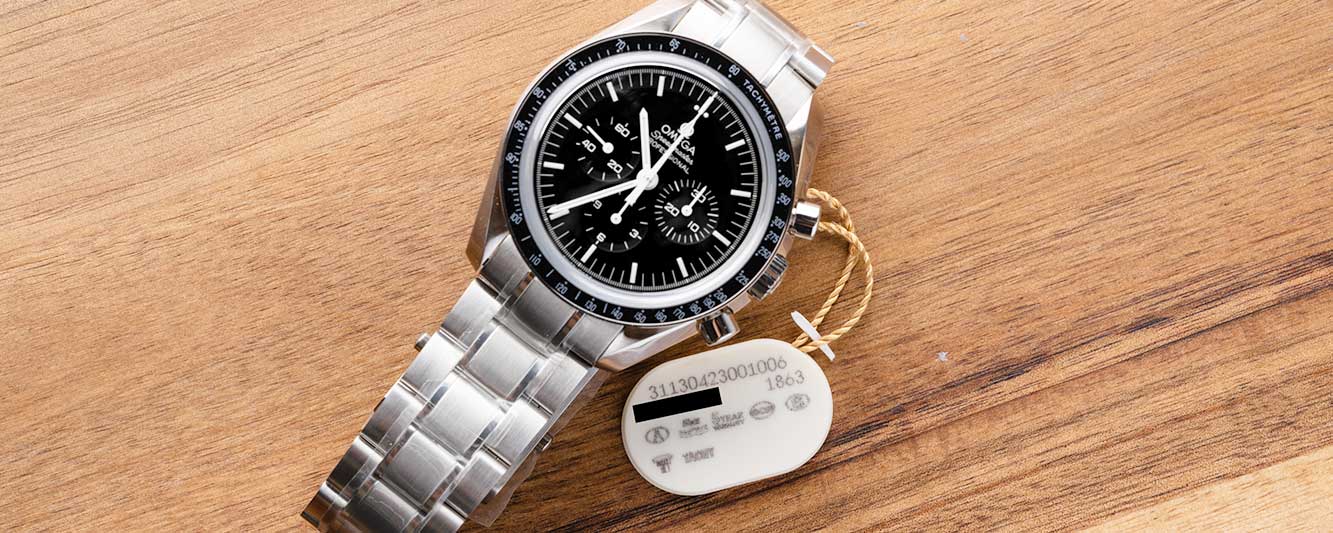

The Complete Guide To Understanding Omega Serial Numbers
- Christine Ye
Luxury watch manufacturers use different numbering systems to distinguish their models, and it can be quite perplexing. Omega, a well-known Swiss brand, is not an exception to this. One can quickly become disoriented attempting to comprehend the disparity between serial numbers, reference numbers, and, in Omega’s situation, PIC numbers. To help clarify the distinctions and explain the significance of serial numbers, this guide has been put together. Additionally, it covers how serial numbers have evolved over time, where you can locate them on your watch, and why it is essential to have them.
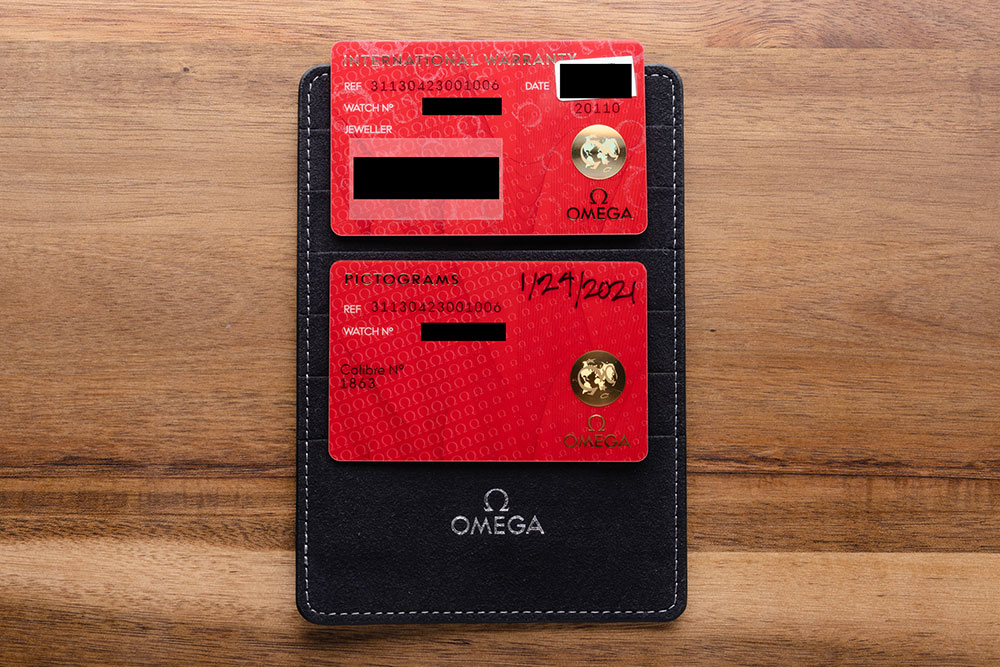
Serial Numbers, Reference Numbers And PIC Numbers: What’s the Difference?
To put it briefly, Omega’s PIC (Product Identification Code) numbers are essentially the same as their reference numbers. These numbers are used to classify each watch based on its model, materials, functions, and features, and Omega has used four different systems for this over time.
Prior to 1962, the code consisted of two letters and four digits.
PIC (XXXX.YY.ZZ)- XXXX: Product Line, Material Type and Product Variation
- First X: Product line
- 1: Constellation
- 2: Seamaster
- 3: Speedmaster
- 4: Deville (Prestige and Symbol)
- 5: Louis Brandt
- 7: DeVille (Vasarelli)
- Second X: Material Type
- 1: Gold case on gold bracelet
- 2: Steel/gold case on steel/gold bracelet
- 3: Steel/gold case on partial steel/gold bracelet
- 4: Steel/gold case on steel bracelet
- 5: Steel case on steel bracelet
- 6: Gold case on leather strap
- 7: Steel/gold case on leather strap
- 8: Steel case on leather strap
- Third and Fourth Xs: Product Variation
- Varies by product line
- First X: Product line
- YY: Dial Color and Hour Markers
- First Y: Dial color
- 1: Champagne
- 2: White
- 3: Silver
- 4: Gray
- 5: Black
- 6: Ivory
- 8: Blue
- Second Y: Hour markers
- 0: Mixed
- 1: Index
- 2: Arabic
- 3: Roman
- 5: Diamonds
- First Y: Dial color
- ZZ: Strap
- 01: Black
- 02: Brown
- 03: Blue
- 04: Green
Between 1962 and 2007 they used the Mapics system, consisting of two letters followed by either six or seven numbers.
Mapics (XXXXXX-YY ZZ)- First X: Bracelet Material Type
- 1: Leather strap (men’s)
- 2: Leather strap and diamond bezel (men’s)
- 3: Bracelet (men’s)
- 4: Bracelet and diamond bezel (men’s)
- 5: Leather strap (ladies’)
- 6: Leather strap and diamond bezel (ladies’)
- Second X
- 0: Manual winding chronograph
- 4: Manual winding chronograph
- 6: Non-chronograph
- 7: Self-winding chronograph
- 8: Quartz or tuning fork chronograph
- Third X: Additional Features
- 5: No date
- 6: Date
- 8: Chronometer
- Last three Xs: Differentiation of Various Models
- YY: Year of Manufacture
- ZZ: Case Material (could come before or after the numbers)
- BA: Yellow gold
- BC: White gold
- BG: Pink Gold
- BT: Platinum
- DA: Yellow gold combination
- DD: Gold combination
- DG: Pink gold combination
- DL: Gold combination
- MD: Gold plated
- SP: Strap
- ST: Stainless steel
- TA: Titanium and yellow gold combination
- TI: Titanium
- TL Titanium and pink gold combination
The PIC system started in 1988, running concurrently with Mapics, and featured an arrangement of eight numbers in three groups (XXXX.XX.XX).
Finally, today we have the PIC14 structure, with 14 digits in six groups.
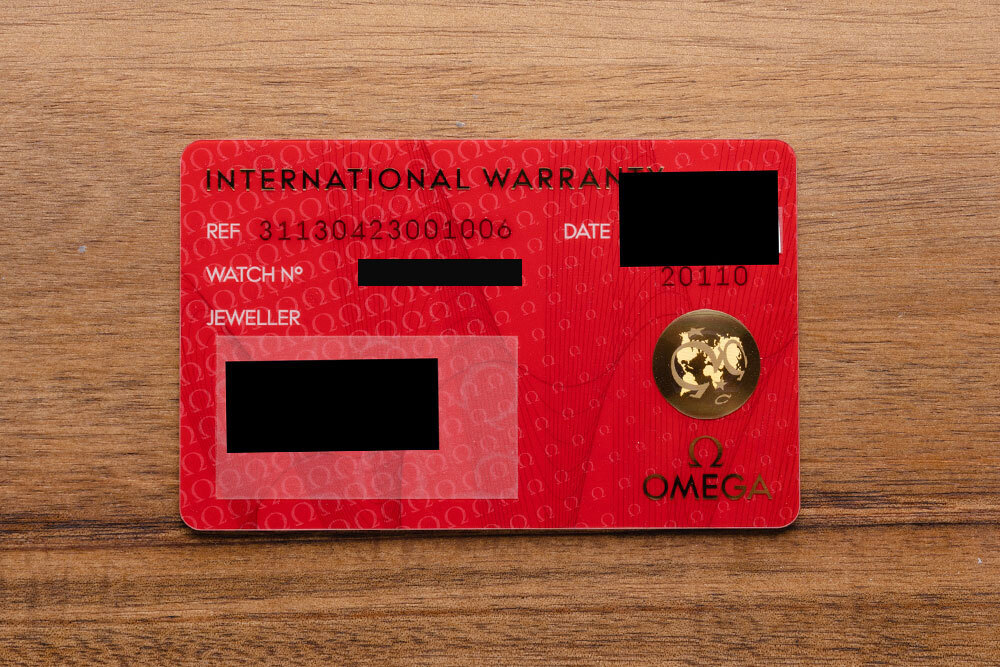



- AAA: Collection
- 123: Constellation
- 212: Seamaster Diver
- 215/232: Seamaster Planet Ocean
- 231: Seamaster Aqua Terra
- 233: Seamaster 300
- 311: Speedmaster
- 331: Speedmaster ’57
- 327: Speedmaster Mark II
- 425: Ladymatic
- 432: De Ville Trésor
- BB: Housing Material and Strap Type
- 10-13: Stainless steel
- 15-18: Stainless steel and paved
- 20-23: Stainless steel and gold
- 25-28: Stainless steel and gold paved
- 30-33: Stainless steel and other material
- 35-38: Stainless steel and other material paved
- 50-53: Gold
- 55-58: Gold paved
- 60-63: Gold and other material
- 65-68: Gold and other material paved
- 90-93: Other material
- 95-98: Other material paved
- CC: Watch diameter size in millimeters
- DD: Type of Movement and Number of Complications
- First D: Movement type
- 0: Mechanical
- 1: Mechanical chronometer
- 2: Mechanical with Co-Axial
- 3: Mechanical with Chronograph
- 4: Mechanical Chrono Chronometre
- 5: Mechanical Chrono with Co-Axial
- 6: Quartz
- 7: Quartz Chronograph
- Second D: Number of complications (0-9)
- First D: Movement type
- EE: Dial Color
- 01: Black
- 02: Silver
- 03: Blue
- 04: White
- 05: White MOP
- 06: Grey
- 07: Colored MOP
- 08: Champagne
- 09: Ivory
- 10: Other Color
- 11: Red
- 12: Yellow
- 13: Brown
- 14-99: Dial color with other combinations such as precious stones
- FFF: Model Number Sequence
So, like I said, it can get a little perplexing. Fortunately, the serial numbers are a bit more straightforward.
What Is a Serial Number?
Each watch in the Omega collection is assigned a unique serial number that distinguishes it from all others. While the PIC numbers are used to classify a specific group of watches based on their model, materials, and features, the serial number identifies the particular individual watch.
Since these serial numbers are typically issued in chronological order, they can provide a rough estimate of when the watch was produced by comparing it to a production chart, such as those provided below. Additionally, they can be utilized to verify the authenticity of the watch or determine if it has been stolen. For example, if a watch model was only released in the 1990s but has a serial number indicating it was made in the 1970s, it is highly likely to be counterfeit. Likewise, if the watch has no serial number at all, it should raise a significant red flag.
Omega Serial Numbers
Starting from around 1894, Omega has been using serial numbers to identify each watch produced, starting with 1,000,000. These serial numbers consist of seven or eight digits, with each number being assigned sequentially, except for some exceptions. Omega continued this system until around 2019 when they reached the number 99,999,999. Instead of using nine-digit reference numbers, Omega switched to randomized eight-digit numbers, similar to Rolex’s serial numbers. However, due to this randomization, it is now more challenging to determine the production year of newer models. It’s worth noting that while Rolex’s serial numbers are straightforward, Omega’s history of identifying their watches can sometimes require additional clarification.
Where is My Serial Number?
The serial number of your watch can be found in various places. If you still have the paperwork that came with the watch when it was purchased, it should be on the warranty card, chronometer certificate, certificate of authenticity, or official service records. However, if you don’t have any of these documents, you could order an ‘Extract from the Archives’ directly from Omega or, failing that, locate the number on the watch itself.
The exact location may vary depending on the age of the watch, but it is usually engraved on either:
- The movement
- The inside of the case back
- The outside of the case back
- The underside of the lugs
For older Omega models, the serial number is usually the same as the caliber’s serial number and can be found engraved on one of the internal movement’s bridges or on the inside of the case back. If the number is not visible on the watch’s exterior, it will be necessary to remove the back to locate it. It’s recommended to have a professional jeweler do this for you.
Starting from around 1990, Omega began including the serial number on the outside of the watch as well, usually on the lugs or the case back.


The Exceptions
There are some exceptions to be aware of when it comes to Omega’s serial numbers. Firstly, some watches use non-chronometer rated calibers or calibers made by third-party manufacturers, such as ETA, which won’t have a movement serial number engraved on them. In such cases, you will need to check other locations for the serial number.
Secondly, due to mass production, the movement may have been assembled and given its serial number considerably earlier than the rest of the watch. Therefore, a newer model may have a lower serial number than an older one.
Thirdly, Omega may vary the position of the serial number on the same model type, for reasons known only to them. So, if you can’t find the number where you expect it to be, it doesn’t necessarily mean the watch is a fake.
Finally, the Omega Speedmaster range has its own separate numbering system, different from the rest of the collection, so you must use the dedicated chart below when looking up the serial number of your Speedmaster.
Omega Serial Numbers 1894-2008 (Excluding Speedmasters)
| Year First Made | Serial Numbers | Year First Made | Serial Numbers |
| 1894 | 1,000,000-1,999,999 | 1979 | 43,000,000-43,999,999 |
| 1902 | 2,000,000-2,999,999 | 1980 | 44,000,000-44,999,999 |
| 1906 | 3,000,000-3,999,999 | 1982 | 45,000,000-45,999,999 |
| 1910 | 4,000,000-4,999,999 | 1984 | 46,000,000-46,999,999 |
| 1915 | 5,000,000-5,999,999 | 1984 | 47,000,000-47,999,999 |
| 1923 | 6,000,000-6,999,999 | 1985 | 48,000,000-48,999,999 |
| 1925 | 7,000,000-7,999,999 | 1986 | 49,000,000-49,999,999 |
| 1934 | 8,000,000-8,999,999 | 1986 | 50,000,000-50,999,999 |
| 1939 | 9,000,000-9,999,999 | 1989 | 51,000,000-51,999,999 |
| 1944 | 10,000,000-10,999,999 | Not Used | 52,000,000-52,999,999 |
| 1947 | 11,000,000-11,999,999 | 1991 | 53,000,000-53,999,999 |
| 1950 | 12,000,000-12,999,999 | 1993 | 54,000,000-54,999,999 |
| 1952 | 13,000,000-13,999,999 | 1995 | 55,000,000-55,999,999 |
| 1954 | 14,000,000-14,999,999 | 1998 | 56,000,000-56,999,999 |
| 1956 | 15,000,000-15,999,999 | 1998 | 57,000,000-57,999,999 |
| 1958 | 16,000,000-16,999,999 | 1998 | 58,000,000-58,999,999 |
| 1959 | 17,000,000-17,999,999 | 1998 | 59,000,000-59,999,999 |
| 1961 | 18,000,000-18,999,999 | 1999 | 60,000,000-60,999,999 |
| 1962 | 19,000,000-19,999,999 | 2000 | 61,000,000-61,999,999 |
| 1963 | 20,000,000-20,999,999 | 2000 | 62,000,000-62,999,999 |
| 1964 | 21,000,000-21,999,999 | 2000 | 63,000,000-63,999,999 |
| 1965 | 22,000,000-22,999,999 | 2000 | 64,000,000-64,999,999 |
| 1966 | 23,000,000-23,999,999 | 2001 | 65,000,000-65,999,999 |
| 1966 | 24,000,000-24,999,999 | 2002 | 66,000,000-66,999,999 |
| 1967 | 25,000,000-25,999,999 | 2002 | 67,000,000-67,999,999 |
| 1968 | 26,000,000-26,999,999 | 2003 | 68,000,000-68,999,999 |
| 1968 | 27,000,000-27,999,999 | 2003 | 69,000,000-69,999,999 |
| 1969 | 28,000,000-28,999,999 | 2004 | 70,000,000-70,999,999 |
| 1969 | 29,000,000-29,999,999 | 2004 | 71,000,000-71,999,999 |
| 1969 | 30,000,000-30,999,999 | 2005 | 72,000,000-72,999,999 |
| 1969 | 31,000,000-31,999,999 | 2005 | 73,000,000-73,999,999 |
| 1970 | 32,000,000-32,999,999 | 2005 | 74,000,000-74,999,999 |
| 1971 | 33,000,000-33,999,999 | 2005 | 75,000,000-75,999,999 |
| 1972 | 34,000,000-34,999,999 | 2005 | 76,000,000-76,999,999 |
| 1972 | 35,000,000-35,999,999 | 2005 | 77,000,000-77,999,999 |
| 1973 | 36,000,000-36,999,999 | 2006 | 78,000,000-78,999,999 |
| 1973 | 37,000,000-37,999,999 | 2006 | 79,000,000-78,999,999 |
| 1974 | 38,000,000-38,999,999 | 2006 | 80,000,000-80,999,999 |
| 1975 | 39,000,000-39,999,999 | 2007 | 81,000,000-81,999,999 |
| 1977 | 40,000,000-40,999,999 | 2007 | 82,000,000-82,999,999 |
| 1978 | 41,000,000-41,999,999 | 2007 | 83,000,000-83,999,999 |
| 1979 | 42,000,000-42,999,999 | 2008 | 84,000,000-84,999,999 |
It’s worth noting that these production charts are not officially published by Omega but are instead compiled by enthusiasts. As a result, their accuracy may not be perfect and should only be used as a general guide to estimate the age of your watch*.
Furthermore, for watches produced after 2008, Omega’s serial number information is limited. To determine the date of a watch with a serial number exceeding 85,000,000, it is recommended to contact Omega directly.
Omega Speedmaster Serial Numbers
| Year First Made | Serial Numbers | Year First Made | Serial Numbers |
| 1957 | 14,000,000-14,999,999 | 1975 | 33,000,000-33,999,999 |
| 1958 | 15,000,000-15,999,999 | 1976 | 34,000,000-34,999,999 |
| 1958/1959 | 16,000,000-16,999,999 | 1977 | 35,000,000-35,999,999 |
| 1960 | 17,000,000-17,999,999 | 1978 | 37,000,000-37,999,999 |
| 1961 | 18,000,000-18,999,999 | 1979 | 38,000,000-38,999,999 |
| 1962 | 19,000,000-19,999,999 | 1980 | 40,000,000-40,999,999 |
| 1963 | 20,000,000-20,999,999 | 1981 | 42,000,000-42,999,999 |
| 1964/1965 | 22,000,000-22,999,999 | 1982 | 43,000,000-43,999,999 |
| 1966 | 23,000,000-23,999,999 | 1983 | 44,000,000-44,999,999 |
| 1967 | 24,000,000-24,999,999 | 1984 | 45,000,000-45,999,999 |
| 1968 | 26,000,000-26,999,999 | 1985 | 46,000,000-46,999,999 |
| 1969 | 27,000,000-27,999,999 | 1986-1989 | 47,000,000-47,999,999 |
| 1970/1971 | 28,000,000-28,999,999 | 1990-1999 | 48,000,000-48,999,999 |
| 1972 | 31,000,000-31,999,999 | New Numbering System Introduced | 49,000,000-76,999,999 skipped |
| 1973 | 32,000,000-32,999,999 | 1999+ | 77,000,000+ |
A Final Word On Serial Numbers
If you come across an Omega watch without a serial number, it is highly likely that it is a counterfeit since the brand assigns a unique serial number to each watch as a proof of its authenticity.
However, the presence of a serial number alone does not guarantee authenticity. Counterfeiters may engrave fake serial numbers on their replicas, although they often reuse the same numbers for multiple copies. It’s recommended to conduct an internet search to see if the serial number has been identified as fake by other watch enthusiasts.
*It’s worth noting that due to possible variations in the manufacturing process, the estimated dates of production based on the serial numbers should be used as an approximation only.
Alternatively, you can seek the opinion of a professional jeweler or watchmaker, or contact Omega directly for further assistance.


-


Omega Seamaster Co‑Axial Master Chronometer Ref. 210.30.42.20.01.001
Call for priceBuy Now View -

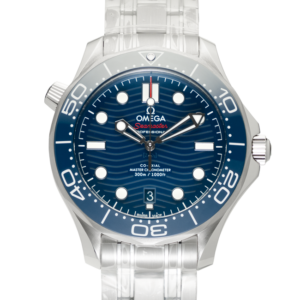
Omega Seamaster Co‑Axial Master Chronometer Ref. 210.30.42.20.03.001
Call for priceBuy Now View -

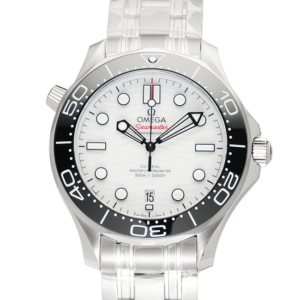
Omega Seamaster Co‑Axial Master Chronometer Ref. 210.30.42.20.04.001
Call for priceBuy Now View -

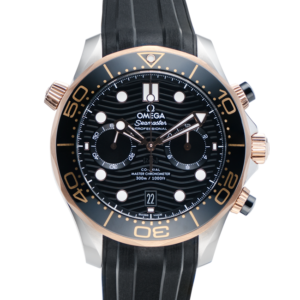
Omega Seamaster Diver Chronograph Ref. 210.22.44.51.01.001
Call for priceBuy Now View
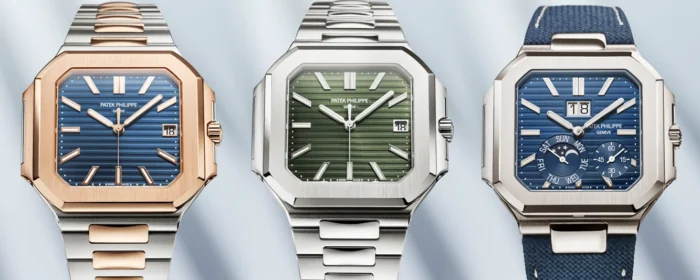

Unveiling of the Patek Philippe New Cubitus Collection: The First in 25 Years
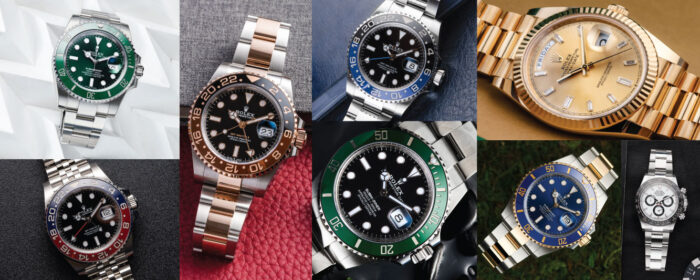

Rolex Watch Nicknames You Need To Know




